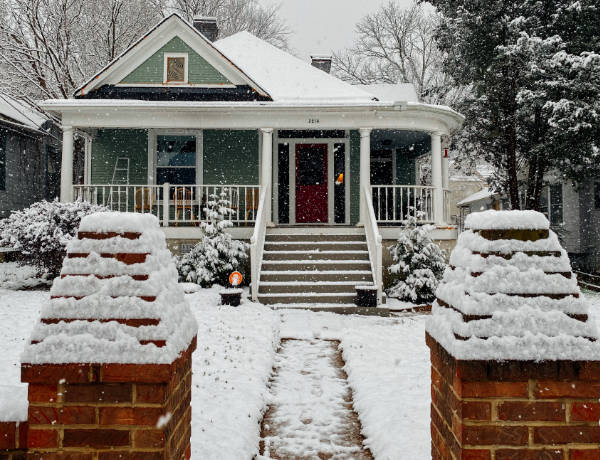
Every design choice makes a ripple. Consider the environmental footprint of that trendy yet non-sustainable coffee table. It's alarming. Now, think about the perks of green makeovers. First off, eco-friendly designs slash our carbon footprint. Secondly, natural materials often translate to healthier indoor air — no sneaky chemicals or pollutants. Moreover, this green switch promises financial savings. Imagine fewer replacements and lower energy bills. Therefore, sustainable transformations are more than just fashion statements. They're commitments — to the environment, our health, and even our wallets. To sum it up, sustainability is the new smart and something homeowners should champion.
Embarking on an eco-friendly home makeover is more than just a design decision; it's a commitment to a healthier, sustainable lifestyle. Here's a look, area by area, of simple changes you can do to make your space more sustainable. Living Area
Shifting our attention to the living area, our central hub of relaxation. Seating solutions like jute or hemp sofas make for stylish yet sustainable choices. Moreover, throw pillows made of organic fabrics can add a splash of color without compromising eco-values. In terms of decor, recycled materials are your best allies. Old wine bottles can be transitioned into chic vases. Meanwhile, thrifted art or sculptures can be refreshing conversation starters. Electronics play a vital role in our daily unwind ritual. Hence, when purchasing, consider energy efficiency ratings. An energy-saving television or sound system reduces electricity consumption, ultimately trimming your bills. Bedrooms
Venturing into the bedroom, especially for kids, the realm of imagination meets reality. Firstly, ensure their beddings are made from materials like organic cotton or bamboo. Soft, hypoallergenic, and environmentally sound. Perfect for a restful night after school shenanigans. Regarding furniture, upcycled pieces reign supreme. Seek out pre-loved treasures at local thrift stores. Repainting or reupholstering can breathe new life into them. Furthermore, when painting the walls or furniture, aim for eco-friendly paints. They lack harmful chemicals, safeguarding both the environment and your child's health.
At the heart of every academic triumph is a conducive study space. Let's initiate our eco journey there. Start with a sustainable desk, perhaps one crafted from bamboo or reclaimed wood. Not only are these materials eco-friendly, but they're also durable. Transitioning next to lighting, opt for LED lights. Bright, energy-efficient, and perfect for those long study hours. And don't forget about indoor plants. Beyond their aesthetic value, they purify the air. Succulents, for instance, are low-maintenance choices. Also, consider ferns for that touch of greenery, aiding concentration as well. Storage is key. And when selecting storage solutions, think of repurposed materials. An old wooden crate, for instance, can be upcycled into a stylish bookshelf. It's about blending functionality with sustainability. DIY Sustainable Decor Ideas
Crafting our own decor brings personal flair to eco-friendly home makeovers. First off, consider reusable fabric bunting. Bright, festive, and zero-waste. Perfect for any celebration or as a whimsical touch in kids' rooms. Moreover, upcycling old containers introduces a creative twist. Those discarded jars? Now, they're quirky vases or candleholders. But there's more. Nature provides a plethora of craft materials. Take pinecones, for instance. Gathered and arranged, they transform into rustic centerpieces. Similarly, dried flowers encapsulate beauty without the environmental toll of plastic decor. So, let's recap. Making our own sustainable decor champions the environment and ignites our creativity. Encouraging Sustainable Habits Post-Makeover
So, your home now sparkles with sustainable charm — what’s next? Maintaining these eco-friendly strides is crucial. Firstly, integrate recycling into your daily routine. Easy access bins can make a world of difference. Composting? That's a game-changer, especially for organic waste. As you bask in your green haven, consider embracing minimalism. Fewer items often mean less waste. And when shopping, remember: quality trumps quantity. Teach your kids this ethos, too. By doing so, you're planting seeds of sustainability in their minds. The eco-makeover journey doesn't end with decor. It's an ongoing commitment, a lifestyle. Let’s keep the momentum going and inspire others along the way. Green living? It's the gift that keeps on giving. Eco-friendly home makeovers offer more than aesthetic appeal. They intertwine style with responsibility. Such makeovers go beyond trends; they reflect conscious choices for a healthier planet. Each sustainable touch in your home echoes a commitment to tomorrow. So, as we've journeyed together through these green ideas, remember the lasting impact. Small changes, when collectively embraced, pave the way for significant transformations. So, why wait? Dive into the world of sustainable decor. Inspire, get inspired, and watch as your home evolves into an eco-haven. Together, we craft a brighter, greener future, one room at a time.









 A retired minister and his wife had never owned a house. They had spent all their married lives living in housing provided by churches. At age 65, they bought a house and financed it for 15 years. They had been frugal and had saved a good down payment. They paid for the house by age 80. The value of the house increased over the years and at age 83 they sold the house and received a very nice check. The money from the sale was enough to help them fund their next ten years in a nice assisted living apartment. While taking on a mortgage at 65 appeared crazy to some it afforded them financial security further down the road.
Many years ago, I bought a modest new house that cost $151,000. I barely scraped together the nearly $30,000 down payment. The house was financed for 15 years. I began the laborious journey of writing a monthly check to the bank. After about eight years, I needed money to pay medical bills and was able to borrow $30,000 against my equity. It was nice that I had the equity because at that time I really needed the cash. Looking back, I would never do that again because it made the actual cost of my house increase to $181,000. For a couple of years, I had two payments to make to the bank. A couple of years later my wife passed. If I had needed to borrow $10,000 against my house, I could have done so to pay for funeral expenses. Fortunately, we had both taken out small insurance policies that covered that cost. Eventually I refinanced and consolidated the mortgages. By the grace of God I still paid for the house in 15 years.
I don’t like monthly payments or paying rent. For most of us, at some point in our lives there will be a monthly payment of some kind. I’ve lived in apartments on several occasions and even houses furnished to me by congregations I served. I didn’t care for either one. I’m not saying I wouldn’t do it again but my preference is to live in a place that is actually mine for as long as possible.
Renting a house or an apartment works for many at different stages of life. Buying a house is tough because it is a major financial commitment. You normally have to come up with 20% of the price to pay down as well as have the income to make the payments. That’s not always easy.
New houses in a nearby neighborhood are presently selling for $400,000. Most of them are modest three to four-bedroom houses. Having enough money to make the down payment and monthly payments is a lot for any person or family.
However, rent is expensive. Depending on where you live you may be paying $800 to $3,000 a month for a small apartment. You don’t have maintenance or property taxes but you’ll also never see that money again. A friend of mine sold her house at age 70 and moved into an apartment complex for people over age 55. She pays rent but she says the landlord treats her well and is timely with upkeep. A landlord who is very untimely with upkeep is very frustrating.
There are pros and cons to owning and renting. Choosing depends on your situation and personal preferences. A landlord can raise your rent and have rules pertaining to pets, painting, and more. However, it may be just exactly what you need. Typically, you don’t want to sink your money into property if you are going to move in three or four years. You might come out ahead if you buy a fixer upper and have the time and money to improve the property. You don’t want to make a bad buy. Buying property that you can’t resell is a bad idea, unless you love it and plan to live there a long time.
Keep in mind that a big chunk of most American’s wealth is in the house they own. If you pay for it and maintain it you can normally sell it to someone and recoup a lot of your money. You might even make a nice profit.
A retired minister and his wife had never owned a house. They had spent all their married lives living in housing provided by churches. At age 65, they bought a house and financed it for 15 years. They had been frugal and had saved a good down payment. They paid for the house by age 80. The value of the house increased over the years and at age 83 they sold the house and received a very nice check. The money from the sale was enough to help them fund their next ten years in a nice assisted living apartment. While taking on a mortgage at 65 appeared crazy to some it afforded them financial security further down the road.
Many years ago, I bought a modest new house that cost $151,000. I barely scraped together the nearly $30,000 down payment. The house was financed for 15 years. I began the laborious journey of writing a monthly check to the bank. After about eight years, I needed money to pay medical bills and was able to borrow $30,000 against my equity. It was nice that I had the equity because at that time I really needed the cash. Looking back, I would never do that again because it made the actual cost of my house increase to $181,000. For a couple of years, I had two payments to make to the bank. A couple of years later my wife passed. If I had needed to borrow $10,000 against my house, I could have done so to pay for funeral expenses. Fortunately, we had both taken out small insurance policies that covered that cost. Eventually I refinanced and consolidated the mortgages. By the grace of God I still paid for the house in 15 years.
I don’t like monthly payments or paying rent. For most of us, at some point in our lives there will be a monthly payment of some kind. I’ve lived in apartments on several occasions and even houses furnished to me by congregations I served. I didn’t care for either one. I’m not saying I wouldn’t do it again but my preference is to live in a place that is actually mine for as long as possible.
Renting a house or an apartment works for many at different stages of life. Buying a house is tough because it is a major financial commitment. You normally have to come up with 20% of the price to pay down as well as have the income to make the payments. That’s not always easy.
New houses in a nearby neighborhood are presently selling for $400,000. Most of them are modest three to four-bedroom houses. Having enough money to make the down payment and monthly payments is a lot for any person or family.
However, rent is expensive. Depending on where you live you may be paying $800 to $3,000 a month for a small apartment. You don’t have maintenance or property taxes but you’ll also never see that money again. A friend of mine sold her house at age 70 and moved into an apartment complex for people over age 55. She pays rent but she says the landlord treats her well and is timely with upkeep. A landlord who is very untimely with upkeep is very frustrating.
There are pros and cons to owning and renting. Choosing depends on your situation and personal preferences. A landlord can raise your rent and have rules pertaining to pets, painting, and more. However, it may be just exactly what you need. Typically, you don’t want to sink your money into property if you are going to move in three or four years. You might come out ahead if you buy a fixer upper and have the time and money to improve the property. You don’t want to make a bad buy. Buying property that you can’t resell is a bad idea, unless you love it and plan to live there a long time.
Keep in mind that a big chunk of most American’s wealth is in the house they own. If you pay for it and maintain it you can normally sell it to someone and recoup a lot of your money. You might even make a nice profit.




 (NewsUSA) - The last 12 months or so of the Coronavirus pandemic has demonstrated to a large number of employers that working from home can boost productivity, reduce turnover, and lower organizational costs. As the world returns to 'normal', some CEOs and CFOs are enjoying the bottom line benefit from a work-from-home workforce which has significantly reduced utility expenses and lower person-hours needed for support services like janitorial and housekeeping. Many no longer see the need to lease or mortgage large commercial space for administrative staff and functions.
(NewsUSA) - The last 12 months or so of the Coronavirus pandemic has demonstrated to a large number of employers that working from home can boost productivity, reduce turnover, and lower organizational costs. As the world returns to 'normal', some CEOs and CFOs are enjoying the bottom line benefit from a work-from-home workforce which has significantly reduced utility expenses and lower person-hours needed for support services like janitorial and housekeeping. Many no longer see the need to lease or mortgage large commercial space for administrative staff and functions.

 While gathering for Thanksgiving is intended to be a joyous occasion, everyone who has hosted the feast knows it can also come with a lot of stress, and expenses.
While gathering for Thanksgiving is intended to be a joyous occasion, everyone who has hosted the feast knows it can also come with a lot of stress, and expenses.

